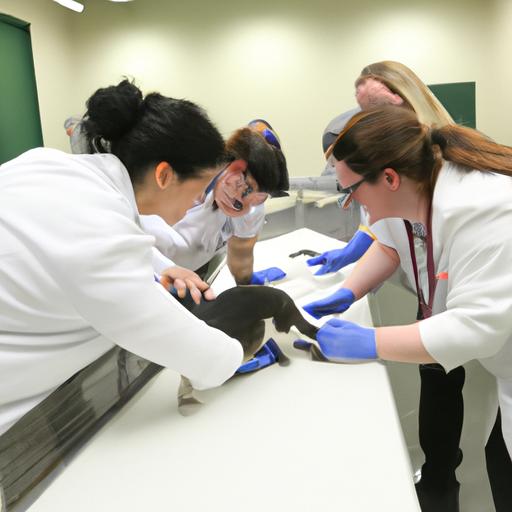Sonographer vs Ultrasound Tech: A Comprehensive Guide
Introduction
When exploring the realm of medical imaging, terms like “sonographer” and “ultrasound tech” may seem interchangeable at first glance. However, delving deeper into their roles reveals distinct differences that impact patient care and diagnostic accuracy. A sonographer, also known as a diagnostic medical sonographer, and an ultrasound tech, short for ultrasound technician, play pivotal roles in the healthcare field, utilizing advanced technology to visualize internal structures of the human body.
Definition of Sonographer and Ultrasound Tech
A sonographer is a highly skilled healthcare professional trained to operate ultrasound equipment and capture images of various body parts to aid in diagnosing medical conditions. On the other hand, an ultrasound tech focuses on using ultrasound technology to perform diagnostic imaging procedures under the guidance of a physician. Both roles require precision, attention to detail, and a deep understanding of anatomy to produce accurate results that inform medical decisions.
Importance of Diagnostic Medical Sonography
Diagnostic medical sonography is a critical component of modern healthcare, offering non-invasive imaging techniques that provide valuable insights for diagnosing diseases and monitoring treatment progress. Sonographers and ultrasound techs are integral members of the healthcare team, working collaboratively with radiologists and other medical professionals to deliver high-quality patient care. As technology advances and medical imaging becomes increasingly sophisticated, the roles of sonographers and ultrasound techs continue to evolve, shaping the future of diagnostic medicine.
Educational Requirements
Training and Certification for Sonographers
Becoming a sonographer entails completing a formal education program, typically a two-year associate degree or a four-year bachelor’s degree in diagnostic medical sonography. These programs cover coursework in anatomy, physiology, patient care, and ultrasound physics, preparing students for the hands-on aspects of the profession. Additionally, aspiring sonographers must obtain certification from organizations like the American Registry for Diagnostic Medical Sonography (ARDMS) or the American Registry of Radiologic Technologists (ARRT) to demonstrate their competency and expertise in the field.
Training and Certification for Ultrasound Techs
In contrast, ultrasound techs often pursue a one-year certificate program or a two-year associate degree in diagnostic medical sonography or ultrasound technology. These programs focus on the technical aspects of operating ultrasound equipment and performing imaging procedures under the supervision of a qualified healthcare provider. Certification is also available for ultrasound techs through organizations like the ARDMS or the Cardiovascular Credentialing International (CCI), providing recognition of their skills and knowledge in the field.
Key Differences in Educational Paths
The educational paths for sonographers and ultrasound techs vary in duration and depth of coursework, reflecting the distinct roles and responsibilities of each profession. While sonographers undergo more extensive training in imaging techniques and patient care, ultrasound techs receive specialized training in performing ultrasound procedures and assisting healthcare providers during diagnostic examinations. Understanding these differences is essential for individuals considering a career in diagnostic medical sonography or ultrasound technology, as it influences their educational journey and future professional opportunities.
Job Duties
Responsibilities of a Sonographer
As a sonographer, your primary responsibility revolves around operating ultrasound equipment to capture high-quality images of the body’s internal structures. You are tasked with positioning patients for optimal imaging, adjusting equipment settings to obtain clear images, and documenting findings for review by healthcare providers. Moreover, your keen attention to detail is crucial in identifying abnormalities or potential areas of concern that require further evaluation. Collaborating with radiologists and other healthcare professionals, you play a vital role in providing accurate diagnostic information that guides patient care decisions.
Responsibilities of an Ultrasound Tech
Conversely, as an ultrasound tech, your role encompasses performing diagnostic imaging procedures using ultrasound technology under the supervision of physicians. You are responsible for preparing patients for examinations, explaining procedures to alleviate any concerns, and maintaining the equipment for optimal performance. Your ability to capture precise images and assist in diagnostic interpretations is pivotal in delivering timely and accurate results to healthcare providers. Additionally, your communication skills and patient interactions contribute to a positive healthcare experience, fostering trust and comfort during the imaging process.
Variances in Job Duties
While both sonographers and ultrasound techs share a common goal of providing high-quality diagnostic imaging, the nuances in their job duties distinguish the scope of their responsibilities. Sonographers typically focus on image acquisition and interpretation, whereas ultrasound techs concentrate on performing imaging procedures and supporting patient care. Understanding these distinctions is essential for aspiring healthcare professionals seeking to embark on a rewarding career in diagnostic medical sonography or ultrasound technology.
Work Settings
Where Sonographers Work
Sonographers are employed in a variety of healthcare settings, including hospitals, clinics, imaging centers, and physician offices. These professionals often work directly with patients, conducting ultrasound exams to assist in the diagnosis of medical conditions. Hospital-based sonographers may specialize in specific areas such as obstetrics, cardiology, or vascular imaging, providing specialized care to patients with diverse healthcare needs.
Where Ultrasound Techs Work
Ultrasound techs can also be found in hospitals, clinics, imaging centers, and physician offices, where they perform diagnostic imaging procedures using ultrasound equipment. While their work environments may overlap with those of sonographers, ultrasound techs typically focus on executing imaging protocols and assisting physicians in obtaining diagnostic images. They play a crucial role in ensuring the quality and accuracy of ultrasound scans, supporting the diagnostic process.
Contrasting Work Environments
Although sonographers and ultrasound techs share common work settings, their roles within these environments differ significantly. Sonographers are often responsible for conducting comprehensive ultrasound exams, interpreting images, and communicating findings to healthcare providers. In contrast, ultrasound techs primarily concentrate on performing imaging studies according to established protocols, collaborating closely with radiologists and physicians to obtain diagnostic images. Understanding these distinctions can help individuals discern the nuances between these two professions and choose a career path that aligns with their interests and professional goals.
Salary and Job Outlook
Average Salary for Sonographers
In the field of diagnostic medical sonography, professionals can expect competitive salaries reflective of their specialized skills and expertise. According to the Bureau of Labor Statistics, the average annual salary for sonographers in the United States is around $75,920 as of May 2020. However, factors such as experience, certification, geographic location, and the specific healthcare setting can influence individual earning potential. Sonographers in metropolitan areas or specialized medical facilities may command higher salaries compared to those working in rural clinics or general hospitals.
Average Salary for Ultrasound Techs
Ultrasound technicians, also known as diagnostic medical sonographers, typically earn salaries that align closely with those of sonographers. The average annual salary for ultrasound techs in the U.S. is approximately $75,920, based on data from the Bureau of Labor Statistics. Like sonographers, ultrasound techs can enhance their earning potential through advanced certifications, continued education, and specialization in areas such as cardiovascular sonography or abdominal imaging. As the demand for diagnostic imaging services continues to grow, opportunities for career advancement and increased earnings are anticipated for ultrasound techs.
Job Growth Projections
The job outlook for both sonographers and ultrasound techs remains promising, with an anticipated growth rate of 12% from 2019 to 2029, much faster than the average for all occupations. This growth is driven by an aging population in need of diagnostic imaging services, technological advancements in medical imaging, and the expansion of healthcare facilities. As healthcare continues to prioritize early detection and non-invasive diagnostic procedures, the demand for skilled sonographers and ultrasound techs is expected to rise, offering ample job opportunities and competitive salaries in the coming years.
Conclusion
In conclusion, the comparison between sonographers and ultrasound techs illuminates the nuanced differences in their roles within the realm of diagnostic medical imaging. While both professions share a common goal of providing accurate and high-quality imaging services, the paths to becoming a sonographer or an ultrasound tech diverge in terms of educational requirements and job responsibilities.
Whether you are considering a career in diagnostic medical sonography or ultrasound technology, it is essential to weigh the unique aspects of each role and align them with your personal interests and career goals. By understanding the distinct skill sets and job duties associated with sonographers and ultrasound techs, you can make an informed decision that resonates with your passion for healthcare and commitment to patient care.
As the demand for diagnostic imaging services continues to grow, opportunities in both sonography and ultrasound technology present promising career prospects for aspiring healthcare professionals. By embracing the evolving landscape of medical imaging and honing your skills in this dynamic field, you can contribute to advancing healthcare outcomes and making a meaningful difference in the lives of patients.





